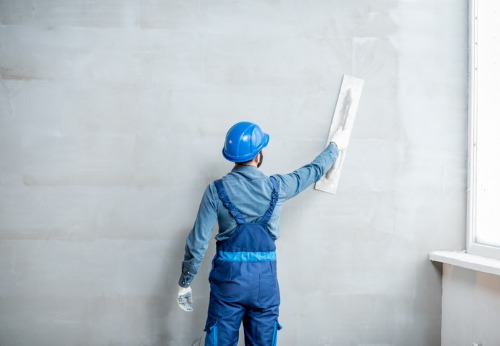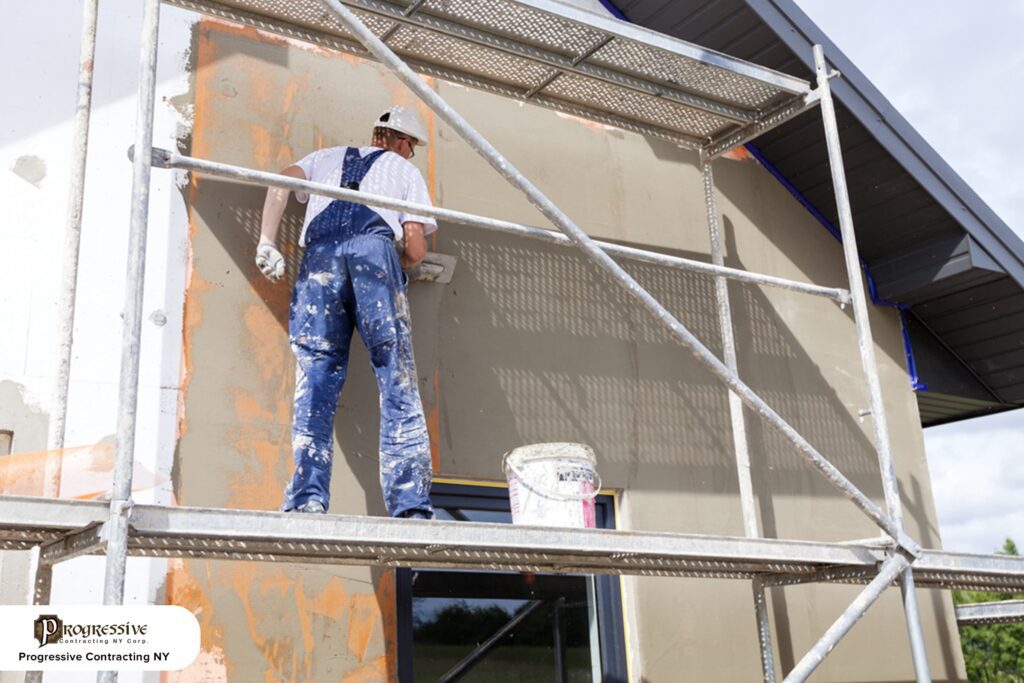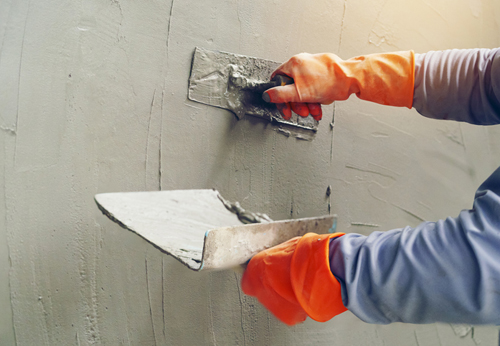Top Tips for Choosing the most effective Stucco Contractor for Your Home Renovation Job
Top Tips for Choosing the most effective Stucco Contractor for Your Home Renovation Job
Blog Article
Checking Out the Adaptability of Stucco in Modern Design
Stucco has actually long been recognized for its visual appeal and versatility, yet its function in contemporary architecture warrants a more detailed exam. This product, traditionally substantial in different architectural activities, now works as a functional option that enhances both the useful and aesthetic aspects of modern structures. By discovering its ingenious applications, from striking facades to energy-efficient layouts, one can appreciate just how stucco is redefining the borders of building expression. This discussion will certainly uncover not just its transformative possibility however additionally the difficulties it faces in an advancing market.
Historic Value of Stucco
The historic value of stucco is profound, as it has played a critical function in building methods throughout numerous societies for centuries. Coming from in ancient human beings, stucco was utilized by the Egyptians and Greeks as a long lasting and functional finish for both interior and outside surface areas. Its versatility to different environments and capacity to resemble more expensive materials made it a popular option.
In the Roman period, stucco came to be a primary decorative aspect, utilized thoroughly in public buildings, suites, and temples. The Romans refined the application methods, permitting complex layouts and relief sculptures. During the Renaissance, stucco experienced a revival, especially in Italy, where it was utilized in ornamental details and fancy facades, showcasing the creativity of the duration.

Modern Applications in Design
Stucco has actually found restored relevance in modern-day design due to its versatility and aesthetic allure (stucco contractor). This conventional material is increasingly used in modern layout, bridging the void between timeless and modern aesthetics. Developers and architects appreciate stucco for its versatility, enabling it to be used in numerous designs-- from minimal structures to clarify Mediterranean styles
In household tasks, stucco supplies a clean, seamless coating that improves the visual communication of exteriors. Its ability to satisfy various forms and surface areas makes it a suitable selection for both new constructions and restoration jobs. In addition, stucco's durability and low upkeep demands add to its expanding popularity in city setups, where resilient materials are necessary.
Industrial applications have actually additionally accepted stucco, with several businesses going with this material to create welcoming and distinctive shops. Using stucco in public buildings, such as schools and recreation center, showcases its capacity for producing visually appealing environments while offering outstanding insulation properties.
Shade and Texture Technologies
Discovering shade and structure developments in stucco has opened up brand-new opportunities for developers and engineers, enhancing the product's aesthetic influence in modern building and construction. Current developments in pigment technology have actually permitted a broader spectrum of shades, allowing developers to develop striking facades that incorporate flawlessly with their environments or stand apart as vibrant architectural statements. This versatility in color option provides engineers the ability to evoke details emotional responses and balance with regional looks.
Structure technologies Get More Information have likewise changed stucco applications. Techniques such as troweling, spraying, and marking have actually resulted in diverse surface area finishes, ranging from smooth and improved to rugged and tactile. These variants not just add to the structure's personality but also play a crucial function in light interaction, boosting the visual depth and dimensionality of surfaces.
In addition, the intro of artificial stucco alternatives has increased style possibilities, supplying enhanced toughness and weather resistance while maintaining visual allure. As designers remain to explore cutting-edge shade combinations and distinctive coatings, stucco continues to be a pivotal aspect in modern-day style, showcasing the product's adaptability and timeless significance in contemporary design.
Sustainability and Power Efficiency
Developments in shade and texture have not only enhanced the aesthetic appeal of stucco however likewise led the method for higher focus on sustainability and energy effectiveness in modern-day style. As ecological issues end up being increasingly popular, the building and construction sector is transforming its interest to materials that contribute positively to environmental equilibrium.
Stucco, composed mainly of natural products such as concrete, lime, and sand, uses a lasting alternative to more resource-intensive structure materials. Its longevity and longevity lower the requirement for frequent substitutes, thereby reducing waste and source usage in time. Additionally, modern stucco formulations usually consist of energy-efficient additives that boost insulation properties, reducing heating & cooling prices for buildings.
The reflective qualities of stucco can likewise be crafted to reduce warmth absorption, contributing to cooler interior environments and less dependence on synthetic climate control systems. By promoting energy preservation and reducing the carbon impact of structures, stucco straightens with the principles of lasting style. As designers and contractors adopt green practices and innovative methods, stucco stands out as a liable and flexible option in content contemporary design.

Case Research Studies of Stucco Projects
The flexibility of stucco as a building product is exemplified in various successful building projects that highlight its aesthetic and useful advantages. One significant example is the improvement of the historic Casa de la Guerra in Santa Barbara, The Golden State. Making use of stucco not only maintained the structure's Spanish Colonial Rebirth design yet also improved its durability and climate resistance, making certain durability while maintaining building honesty.
One more compelling case is the modern domestic project, the Cactus Home in Scottsdale, Arizona. stucco contractor. This striking home functions a smooth stucco finish that integrates with the surrounding desert landscape. The stucco's light shade reflects warmth, adding to power efficiency, while the distinctive surfaces add aesthetic passion
Furthermore, the Kings Cross redevelopment in London showcases the adaptability of stucco in metropolitan setups. The application of stucco on modern mixed-use structures creates a natural aesthetic that appreciates historic context while embracing modern design principles.
These instance studies demonstrate just how stucco can serve different building objectives, from preservation and power efficiency to aesthetic improvement, making it a versatile choice in contemporary architecture.
Final Thought
 In conclusion, stucco's historical importance and modern flexibility make it an important material in contemporary design. As demonstrated via numerous situation studies, stucco continues to play an essential role in forming the architectural landscape of the additional info modern period.
In conclusion, stucco's historical importance and modern flexibility make it an important material in contemporary design. As demonstrated via numerous situation studies, stucco continues to play an essential role in forming the architectural landscape of the additional info modern period.
In conclusion, stucco's historical importance and modern flexibility make it an important material in contemporary architecture.
Report this page